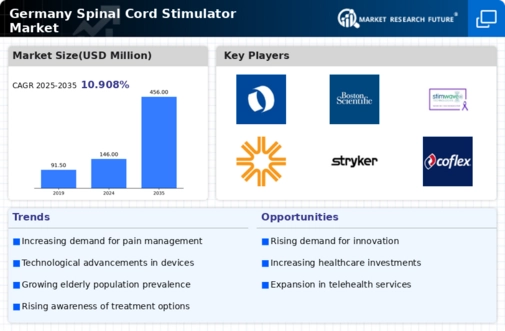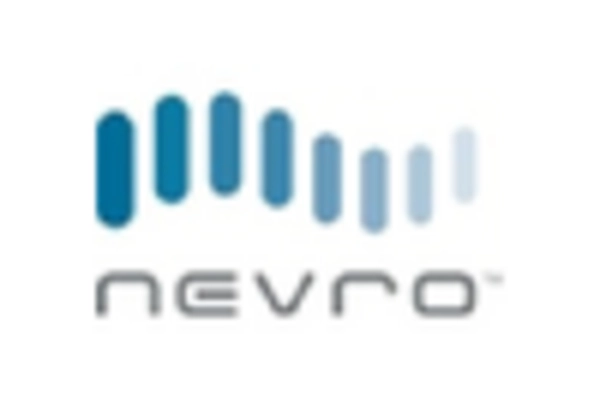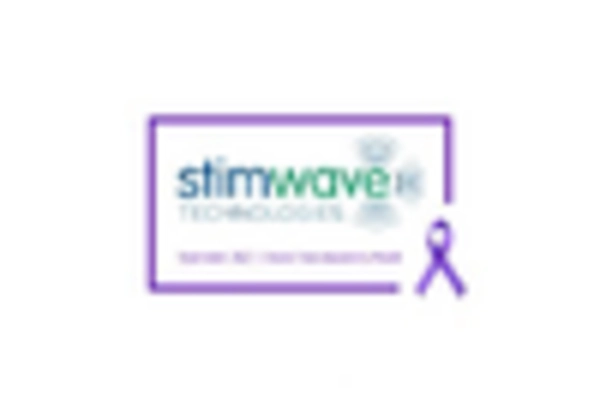Rising Prevalence of Chronic Pain
The increasing incidence of chronic pain conditions in Germany is a primary driver for the spinal cord-stimulator market. Conditions such as neuropathic pain, fibromyalgia, and failed back surgery syndrome are becoming more prevalent, affecting a significant portion of the population. According to recent health statistics, approximately 20% of adults in Germany experience chronic pain, which necessitates effective pain management solutions. Spinal cord stimulators offer a minimally invasive option for patients who do not respond to conventional therapies. This growing patient population is likely to propel demand for spinal cord stimulators, as healthcare providers seek innovative solutions to improve quality of life and reduce reliance on opioid medications. As a result, the spinal cord-stimulator market is expected to expand in response to this rising prevalence of chronic pain conditions.
Supportive Reimbursement Policies
The reimbursement landscape for spinal cord stimulators in Germany is becoming increasingly favorable, which is a crucial driver for the market. Health insurance providers are beginning to recognize the cost-effectiveness of spinal cord stimulation as a long-term pain management solution. As a result, more patients are gaining access to these devices through insurance coverage, which alleviates the financial burden associated with treatment. The German healthcare system's emphasis on evidence-based medicine supports the inclusion of spinal cord stimulators in reimbursement schedules, further encouraging their adoption. This supportive reimbursement environment is likely to stimulate growth in the spinal cord-stimulator market, as more patients can afford to pursue this advanced treatment option.
Advancements in Medical Technology
Technological innovations in the field of neuromodulation are significantly influencing the spinal cord-stimulator market. Recent developments include the introduction of closed-loop systems that can automatically adjust stimulation based on real-time feedback from the patient. These advancements enhance the efficacy of pain management and improve patient outcomes. Furthermore, the integration of wireless technology allows for remote monitoring and adjustments, making treatment more convenient for patients. The market for spinal cord stimulators in Germany is projected to grow as these advanced technologies become more widely adopted. The increasing focus on personalized medicine and patient-centric approaches in healthcare is likely to further drive the demand for sophisticated spinal cord stimulators, positioning the market for substantial growth in the coming years.
Growing Investment in Healthcare Infrastructure
Germany's commitment to enhancing its healthcare infrastructure is a significant driver for the spinal cord-stimulator market. Increased funding for healthcare facilities and technological advancements is facilitating the adoption of innovative medical devices, including spinal cord stimulators. The government and private sector are investing in modernizing hospitals and clinics, ensuring that they are equipped with the latest technologies to provide effective patient care. This investment is likely to improve access to spinal cord stimulation therapies, as healthcare providers are better equipped to offer these advanced treatments. As the healthcare infrastructure continues to evolve, the spinal cord-stimulator market is expected to benefit from improved accessibility and availability of these devices.
Increased Awareness and Acceptance of Neuromodulation
There is a growing awareness and acceptance of neuromodulation therapies among both healthcare professionals and patients in Germany. Educational initiatives and outreach programs have contributed to a better understanding of the benefits of spinal cord stimulators for pain management. As more healthcare providers recognize the effectiveness of these devices, referrals for spinal cord stimulation therapy are likely to increase. Additionally, patient advocacy groups are playing a crucial role in promoting awareness of chronic pain management options, which may lead to higher demand for spinal cord stimulators. This shift in perception is expected to positively impact the spinal cord-stimulator market, as more patients seek out these innovative solutions for their pain management needs.

















Leave a Comment